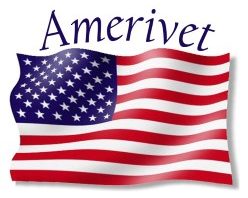Since I made the last entry, quite a few things have come to mind about “what the market will bear,” and it’s like likely this could become a three part series, maybe more. We’ll start with Part 2 and see where it goes from there.
One thing about elasticity is that it goes both positive and negative, as previously mentioned. In other words, a portion of the market could change in a negative direction, theoretically leaving a business no choice but to lower prices. However there’s always a second choice of not playing in that portion of the market at all, and I see lots of businesses making that choice all of the time. Why fight for money that isn’t there?
For me, one example comes from a request to quote assembly of a steel building a month or so ago. I took Larry (my wise voice of sanity) with me to look at this building that had been delivered eight years ago and has sat in the weeds waiting for assembly ever since. While this sounds like a recipe for disaster, I figured I would take a look at it and give it a chance. We looked at the piles of steel, noted rust and other damage to most of it, looked at the assembly blueprints, and left underwhelmed. For some reason, I felt compelled to quote the work anyway. I knew the customer wasn’t going to like my pricing, because that building had laid on the ground for eight years and quite honestly was more valuable at the scrap yard. Sure enough, I was right. The price the customer had expected to see was less than what manpower and equipment would have cost, and of course it was an exercise in futility though the experience did broaden a few of my horizons.
The thing is, broadening your horizons is great as long as you can put food on the table in the process. That’s really the biggest trick of making a business grow: You have to make growth happen while making enough profit to put food on the table. I started Amerivet Services with $350 and have made it grow largely without credit or financial help from others. Maybe this has reduced the rate of growth, but it has also forced me to put serious and careful thought into each transaction to make sure it’s the right one. Whether taking on a new project or acquiring new equipment, every step has to be the right one because if I accidentally step into the wrong situation, it could put the whole business at risk.
The range of markets Amerivet Services serves is such that our base rate falls somewhere in the middle of what the market will bear. Each month I review our costs and try to make sure our rates are high enough to make a profit, yet low enough to capture the right portion of the market. As we enter new markets, figuring out how to price our work is the biggest challenge. Some of making a market bear fruit amounts to educating people that the cost of driving a 3″ nail into a 2 x 4 is substantially less than the cost of making a 3″ weld on a piece of steel channel. I’ve seen a lot of people make that mistake.
When it comes to choosing markets with the right amount of elasticity, I like to stay in the “custom” world, where we’re not doing the things everyone else does. Everybody says to find a niche and go for it, and it’s safe to say Amerivet Services’ niche is “custom service.” If you need something and nobody else can do it, call us…we need to talk, because that’s the market we excel in.
For today’s parting shot, here’s a custom emergency job I did last weekend. An extrusion plant outside of Elkhart, IN had a liner/container crack on one of their big extrusion presses, and they couldn’t get it out to replace it because the assembly had expanded when it cracked. I spent 10 hours arc gouging the hardened steel liner and took measurements that showed the assembly had shrunk enough to get it out. Sure enough, the next morning a crew came in to remove it, and after a little maneuvering it slid right out, allowing them to replace it with a new one and get back in production mode. This is a perfect example of how we solve problems on the fly.

